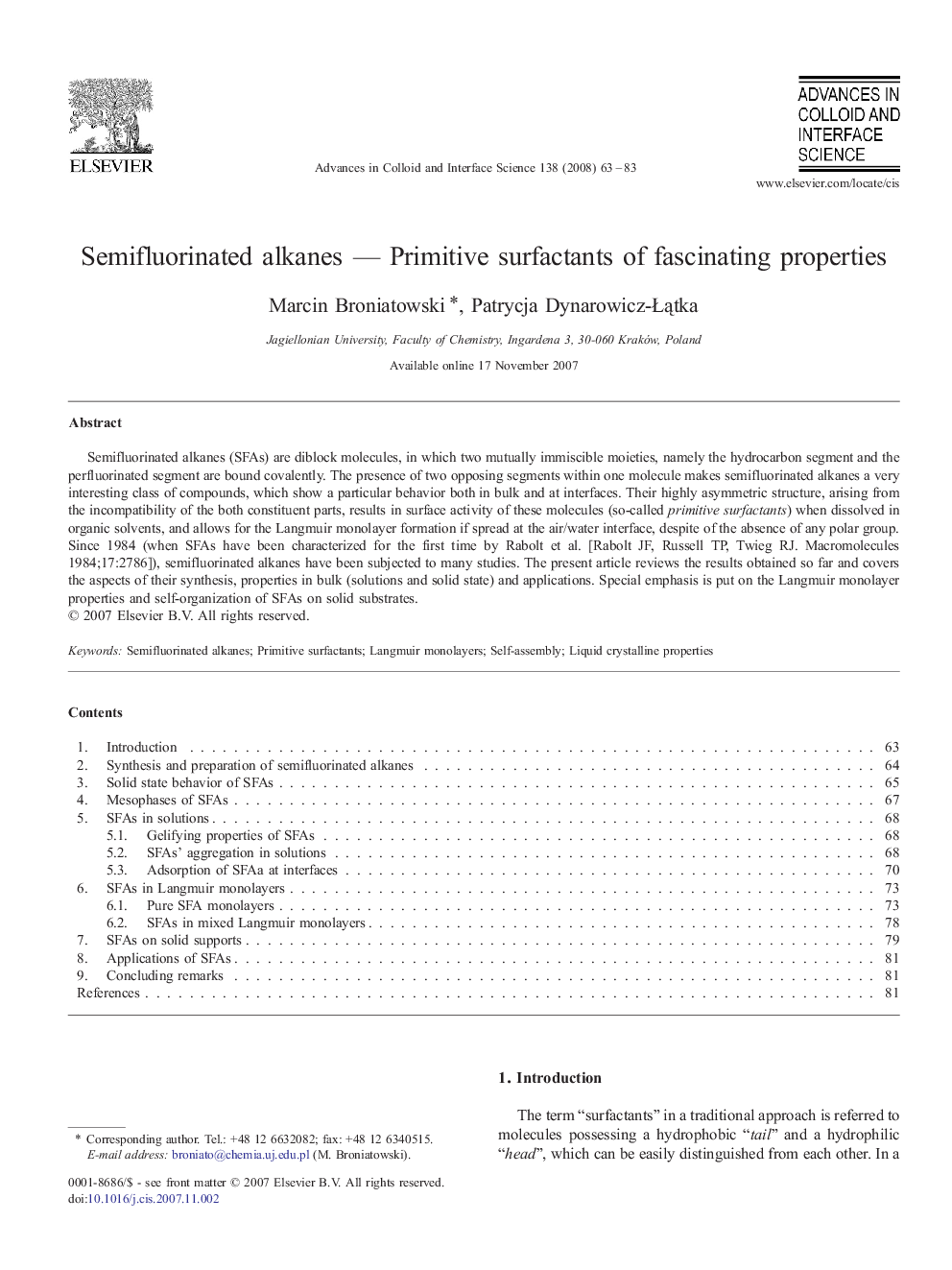| Article ID | Journal | Published Year | Pages | File Type |
|---|---|---|---|---|
| 591283 | Advances in Colloid and Interface Science | 2008 | 21 Pages |
Semifluorinated alkanes (SFAs) are diblock molecules, in which two mutually immiscible moieties, namely the hydrocarbon segment and the perfluorinated segment are bound covalently. The presence of two opposing segments within one molecule makes semifluorinated alkanes a very interesting class of compounds, which show a particular behavior both in bulk and at interfaces. Their highly asymmetric structure, arising from the incompatibility of the both constituent parts, results in surface activity of these molecules (so-called primitive surfactants) when dissolved in organic solvents, and allows for the Langmuir monolayer formation if spread at the air/water interface, despite of the absence of any polar group. Since 1984 (when SFAs have been characterized for the first time by Rabolt et al. [Rabolt JF, Russell TP, Twieg RJ. Macromolecules 1984;17:2786]), semifluorinated alkanes have been subjected to many studies. The present article reviews the results obtained so far and covers the aspects of their synthesis, properties in bulk (solutions and solid state) and applications. Special emphasis is put on the Langmuir monolayer properties and self-organization of SFAs on solid substrates.
